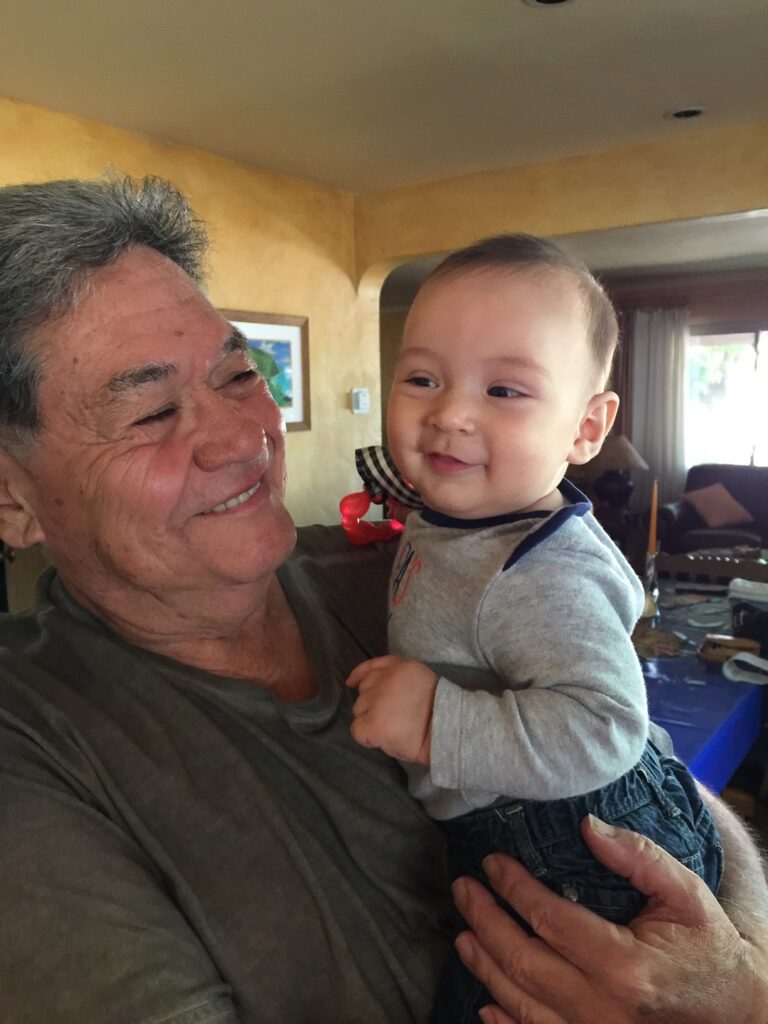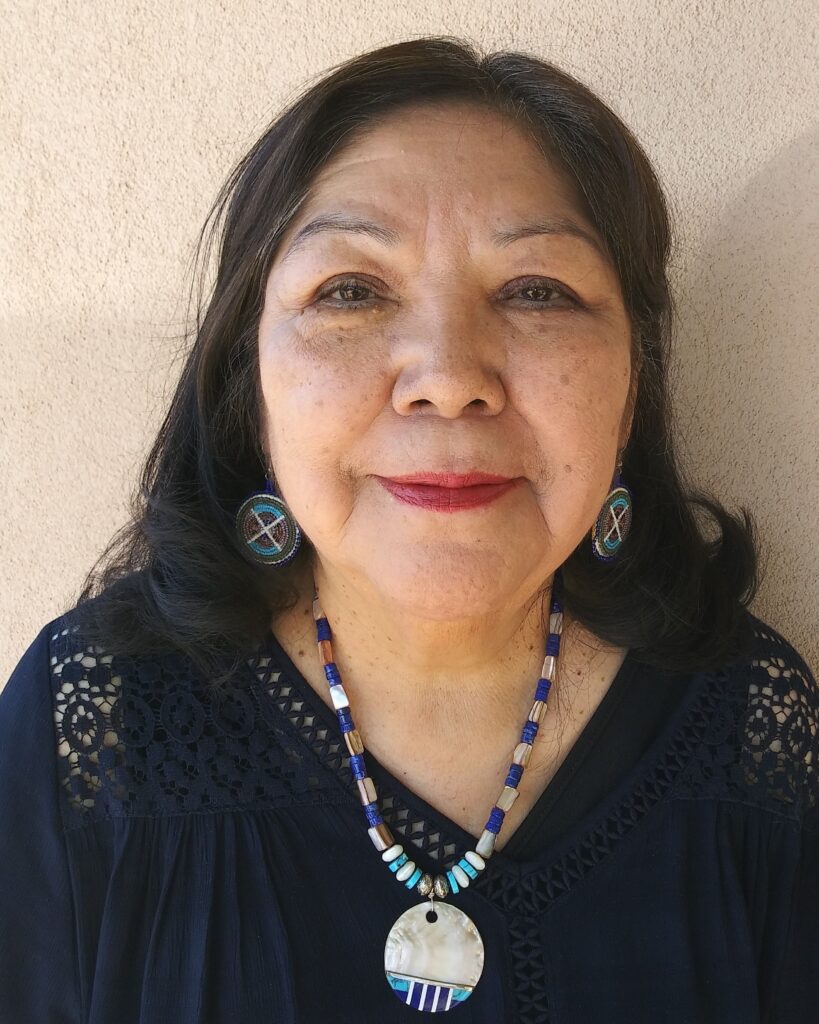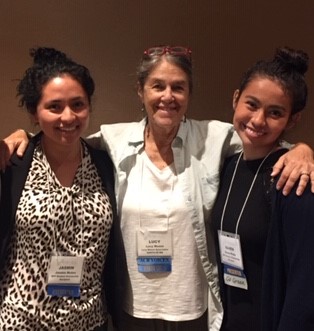Some of the most rewarding work I do is with my dear friends and colleagues Roberto Chene and Nadine Tafoya. Together we are a multicultural team ready to spring into action to rescue poor White organizations struggling with issues of diversity, equity and inclusion. Imagine superheroes, at a moment’s notice, tackling the deepest historical trauma, the most entrenched implicit bias, cross-cultural miscommunication of epic proportions, all in a single workshop! A ridiculous image, but on a good day it can feel like that.
An Hispano and a native New Mexican, Roberto is a consultant and trainer specializing in helping non-profits, agencies, and others who are struggling to create and sustain intercultural workplaces. He is a genius at delivering difficult messages about systemic racism, internalized oppression, and all the other loaded themes at the core of so much conflict and angst today. Nadine is a member of the Mescalero Apache Tribe in southern New Mexico and lives at Santa Clara Pueblo, her husband’s pueblo north of Santa Fe. She is a health consultant working with federal and state agencies, universities, and local groups to improve behavioral health service delivery to Native communities. This means constant attention to the dynamics between the powerful and those in need. She walks this tightrope with skill, diplomacy and fearless honesty.


I am so proud to partner with these two superheroes to consult and offer workshops on building successful intercultural workplaces. I can offer a White perspective, often an uncomfortable place for me to be. Each of us brings history to the team – personal and cultural – and each of us must be honest with ourselves and others about these histories and how they impact us. Nadine, Roberto and I have worked together for decades and have helped each other build skills and gain insights that make us able – even eager — to do this work that might seem like torture for many. For us, our mutual appreciation and respect, as well as the deep affection we hold for each other, carries us through.
Needless to say, work is booming for us these days. At a recent session one of the participants, an Hispana, told why she had accepted a job with the local non-profit we were working with. “When I came for an interview everyone was White and I felt uncomfortable. But then I saw an African American man on the phone at his desk. I thought, ‘Wow, they are open to hiring people who don’t look like them, people like that guy, people like me.” For her, that one person of color sent a huge message about the values and the intention of this organization. Although the current board and staff were 95% White, she believed that their commitment to diversifying was real. The leadership had listened to these two voices of color about the need to work on creating a truly intercultural workplace, where each member is valued for what they bring, respected for who they are, and welcomed as an equal.
This was a revelatory moment for me. Even just one person of color made the difference for this interviewee, and he was not even the same gender or the same color as her. His presence gave her hope that she could fit in. The organization had a long way to go, and the leadership knew it. They were taking steps in the right direction, and most importantly they were listening to those two voices, taking direction from them, rather than assuming the minority workers would accommodate and assimilate into the White workplace culture.
Roberto has a phrase “recruit and abandon” that rings true for so many non-Whites who have joined all-White organizations or agencies and then left, disappointed in the experience. The most well-intentioned groups can recruit people of color, hoping that “it will work out,” that they will then be able to say they have a board or a staff that is diverse. But the effort is literally skin deep. The diversity they are seeking is cosmetic; they are not willing or not aware enough to ally with the new recruit, to listen to their priorities, take their guidance, and change the way business is done to make that person more comfortable. They are delighted to have a person of color among them, and they may be warm and welcoming, but it ends there. The new hire or board member is abandoned and begins to feel like a token, lending skin color or culture to the organization to make all the White people feel virtuous, and not receiving any meaningful relationship in return.
When the leadership understands that dynamic and chooses to recruit and nurture, not recruit and abandon, the reward can be enormous. Bringing in not just one, but multiple new voices, valuing their contributions, and working through the tough spots can change a group’s values and identity, its structure, communication, even its productivity. Relationships within the organization may deepen, and a new world of potential partners and supporters may open up. Maybe your experience can even inspire others who want to embrace the multicultural reality in which we all live but are afraid to take the plunge.
It won’t be easy but it will be worth it. And, yes, you will have a good-looking brochure, but so much more.



Well thought out and expressed. Thank you for your good work
And I know how much you care about this topic! much appreciation for all you have done to show young people how to bridge cultural divides with the Bali Art Project.
What a beautiful way to build the future. Thank all of you for your inspirations and love. A great team.
Thanks so much, Linda, for the kind words. Yes, if we can deliver inspiration and love, we are happy!!
Lucy, Roberto and Nadine,
What a profound bridge you are building, a bridge that starts at the angst that starts in families and spreads through communities to become walls between people’s then traverses to the kindness that comes when we realize that we all hurt and we are all valuable. May there be an ever present fountain of clarity and wisdom in your minds and a strengthening in your
bones for your work that is so vital to the planet.
Thank you, Karen, for the lovely images.
It is so gratifying to read about the valuable work you, Roberto and Nadine continue to do. Roberto worked with NMCDR a long time ago. Wonderful to see his photo.
Thanks, Jean — I’ll pass your message on to Roberto. He’ll be pleased you remember…although no one ever forgets spending time with him!
You provide some important guidance here, and I hope I’ll have the opportunity to apply it somewhere soon.
Welcome, Ellen. Thanks for joining us.
“Recruit and abandon” really resonated with me, because I thought of how so many JEDI initiatives feel like window dressing.
Exactly. Good intentions are not enough. And for those, like me, who have trouble keeping up with the fast-moving world of acronyms, JEDI stands for Justice Equity Diversity Inclusion, a new iteration of DEI. Tough to keep up!
Thank you for offering this perspective, Lucy and team, coming as it does from lived experience and earned wisdom. Our society is changing, sometimes in powerful waves and sometimes one uncomfortable conversation at a time, and for now I am trying to hold loosely the vocabulary we rely on to frame and guide those changes. I appreciate your addition of justice in your note above – an amendment to DEI/EDI that a young Latina colleague of mine frequently advocates. I wonder if we need a way for these formulations to include belonging as well. As a convener and facilitator, I have witnessed inclusion without respect, without genuine welcome, and must reflect on my part in that dynamic.
Thanks so much, Brad. I really like your thoughts around belonging. That is such a fundamental need and right.